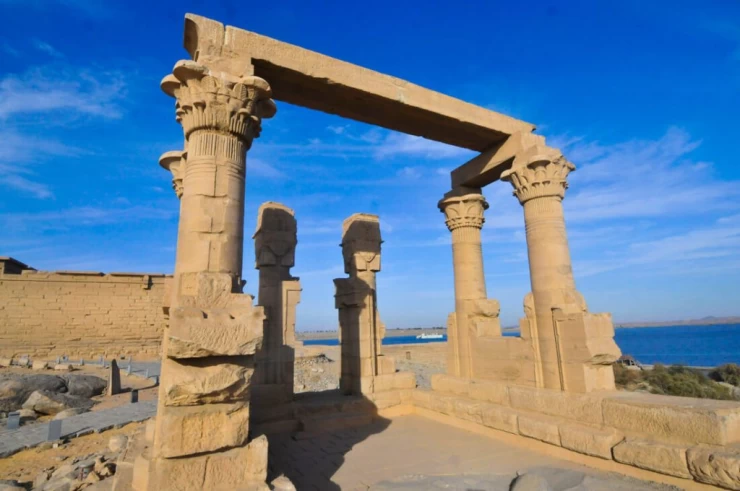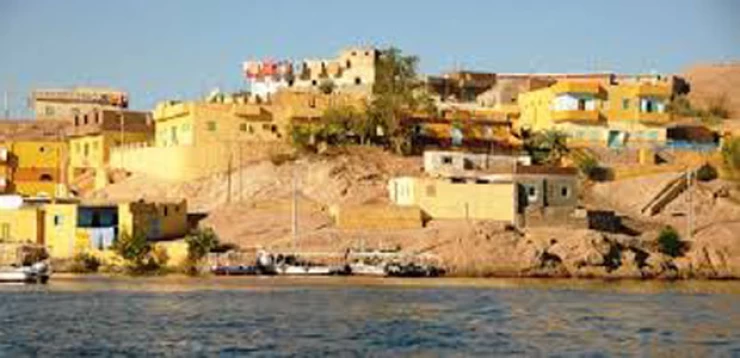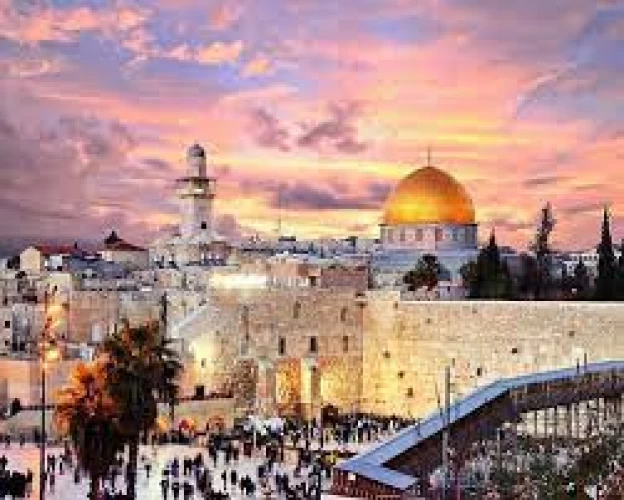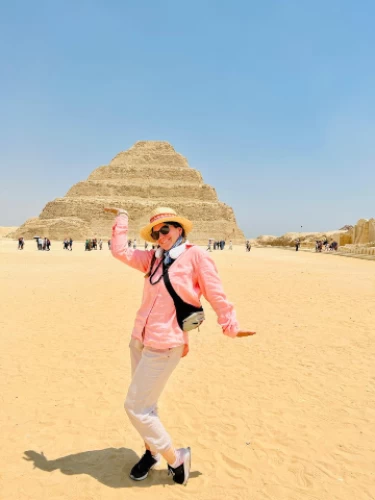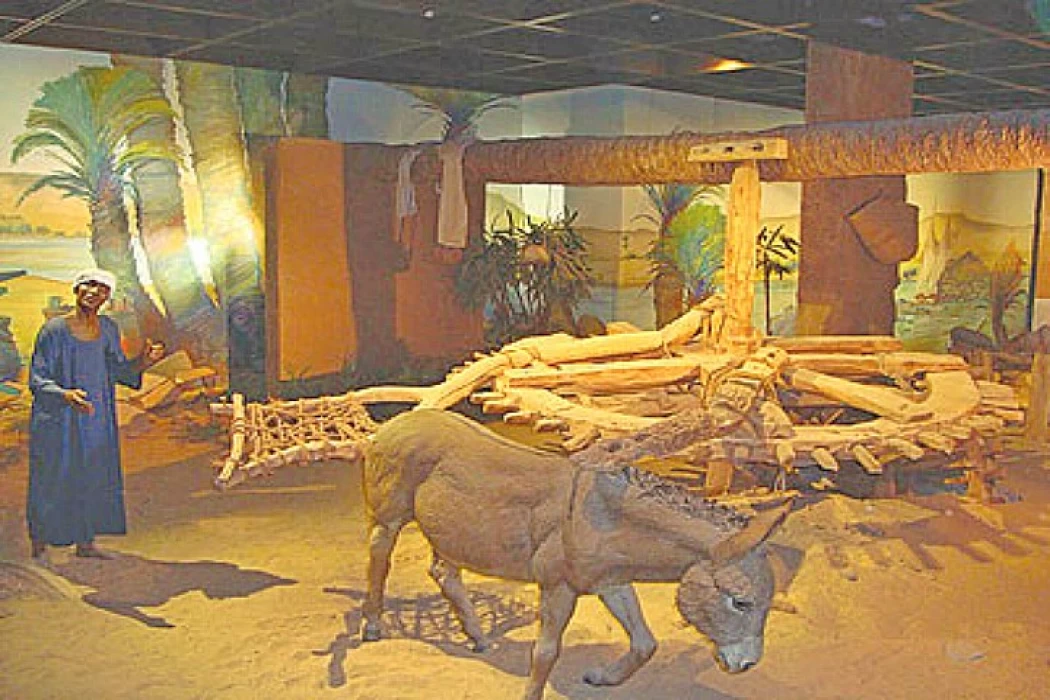
Das alte Nubien | Die Geschichte des nubischen Königreichs
Nubien (arabisch Nuba) Eine Region im nordöstlichen Afrika, zwischen Ägypten und dem Sudan gelegen, in Längsrichtung vom Nil durchzogen, im Norden durch die Assuan-Schleusen, im Osten durch das Rote Meer, im Süden durch den Zusammenfluss von Blauem und Weißem Nil und im Westen durch die Libysche Wüste begrenzt. Nur in unmittelbarer Nähe des Nils, der von sechs Schleusen unterbrochen wird, befindet sich ein Streifen Ackerland, der von Eisenbahnlinien durchzogen ist; hier liegen die wichtigsten Zentren: das Berberland, das Zentrum der Karawanen zum Roten Meer, am Zusammenfluss des Atbara; das alte Zentrum Wadi Halfa, an der Grenze zwischen Ägypten und dem Sudan, wurde nach dem Bau des Assuan-Staudamms überflutet.
Zu Beginn der historischen Epoche (3500 v. Chr.), während die ägyptische Zivilisation mehr und mehr eigenständige Züge annahm, setzte sich in Nubien ein verzögertes Sub-Neolithikum (die so genannte "Gruppe A- und B-Kultur") fort, das sich am Ende des Alten Reiches (2250 v. Chr.) zu einer autonomen und reichen Keramikproduktion entwickelte (die so genannte "Gruppe C-Kultur", die den anfänglichen Hintergrund aller Überschneidungen der ägyptischen Kultur des Mittleren und des Neuen Reiches bilden sollte).
Das Alte Reich war nur an der Ausbeutung der Goldminen des nubischen Landes interessiert; im Mittleren Reich führten militärische Expeditionen zum Schutz der Südgrenzen und der Handelswege des Landes zum Bau einer Reihe ägyptischer Festungen entlang des Flusses bis nach Semnakh, südlich des zweiten Katarakts, ohne dass es zu einer Verschmelzung mit der einheimischen Bevölkerung kam.
Nubia (Arabic Nuba) A region of northeastern Africa, located between Egypt and Sudan, crossed longitudinally by the Nile, bounded on the north by the Aswan Locks, on the east by the Red Sea, on the south by the confluence of the Blue Nile and the White Nile, and on the west by the Libyan Desert. Only in the immediate vicinity of the Nile, interrupted by six locks, is a strip of arable land crossed by railroads; here are the principal centers: the Berber, the center of caravans to the Red Sea, at the confluence of the Atbara; the old center of Wadi Halfa, on the border of Egypt and Sudan, was inundated after the construction of the Aswan Dam.
At the beginning of the historical epoch (3500 B.C.), while Egyptian civilization was acquiring more and more independent features, a delayed sub-Neolithic (the so-called "Group A and B" cultures) continued in Nubia, which at the end of the Old Kingdom (2250 B.C.) developed into an autonomous and rich ceramic production (the so-called "Group C" culture, which would form the initial background of all overlaps of Egyptian Middle Kingdom and New Kingdom culture).
The Old Kingdom was interested only in exploiting the gold mines of the Nubian land; in the Middle Kingdom, military expeditions undertaken to protect the country's southern borders and trade routes led to the construction of a series of Egyptian fortresses along the river as far as Semnakh, south of the second cataract, without a process of amalgamation with the indigenous population or forms of expansion. Under the New Kingdom, under Thutmose I (1504-1492 BCE) in the
Nubian culture does not reflect the connotations and beliefs of its people. Tattoos are considered cultural symbols of Nubia for both men and women, as are murals, beadwork, and palm-frond and wickerwork, which attract tourists, especially foreigners.
The decorative elements, according to the State Information Service, carry specific connotations. The sword symbolizes heroism and courage, while the crescent and star symbolize optimism. The crow and owl are also symbols of bad luck and destruction.
It is called the Land of Gold. The name Nubia is derived from the word (Nub), which means gold in ancient Egyptian. It was also famous for the gold mines that were called Nubaria. In the dictionary, we find that the word Nub means: a generation of people living in a country named after them and located in the southern part of Egypt.
In another sense, the name is attributed to Nabata, the son of the Prophet Ishmael, peace be upon him, and since their rule of the Nile Valley and Africa, they mixed with the local tribes. Over time, many of the African tribes that were under the rule of the Nabataeans took the same title. It is now noticeable that there are dozens of tribes of different races under the same title, with different tongues, and the same title remained, which is the Nubians (Nuba).
It is a Nilo-Saharan language of the Eastern Sudanic branch in southern Egypt and northern Sudan. Most of its speakers lived in the Nile Valley, in what became Lake Nasser after the construction of the High Dam south of Aswan. Its speakers number approximately one million.
Between the eighth and fifteenth centuries AD, Nubians wrote their language in the Coptic alphabet with a few additional letters. However, today, they rarely write it, and those who write Nubian use Arabic or Latin script.







